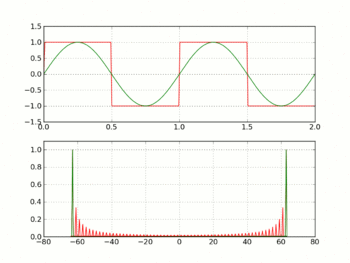I'm working on a waveform generator for which I'm using the DDS AD9833 chip to generate sine signals and triangular signals. I'm trying to amplify these waves since the AD9833 output is 600mVpp and I need waves up to 10 Vpp. The problem is to amplify these waves without the insertion of harmonics; to do this, I wanted to use the INA129 instrumentation amplifier but, by using a common potentiometer, everything went well, but the gain has to be controlled by a microcontroller, so I wanted to use the TPL0102 digital potentiometer.
The potentiometer works well on its own, but when I connect it as the resistance gain of the INA129, the output is always saturated, even when I set the minimum gain, which is 1.
Details:
- INA129 powered with +/- 11V
- INA 129 V- input connected to AGND
- AD9833's output connected to high pass filter to remoce DC voltage, then, it is connected to the V+ pin of the INA129
- TPL0102 Vss pin connected to DGND
- AGND and DGND connected through a 1MΩ resistor
- TPL0102 controlled through I2C with Atmega 328 microcontroller
How can I correct this problem?


Best Answer
You don't specify how TPL0102's supply pin is connected (a circuit diagram would be helpful here), but given its absolute max voltage of 7V, it's a safe bet it's not to the 11V supply.
Digital potentiometers only act as such as long as the signals on them are between their supply rails. It's entirely possible that the voltage on the INA129's adjustment pins is outside this range, which will result in the digipot clipping the signal.
Your approach here is a little strange: using an instrumentation amplifier to amplify a single-ended signal by grounding one terminal is kind of perverse. A regular operational amplifier would work fine here; for digital gain control you can either feed the signal through a digipot beforehand as a variable attenuator, use a programmable gain amplifier, or use a multiplying DAC with enough bandwidth (the DDS output becomes the 'reference voltage' for the DAC, and the DAC value controls the output amplitude).